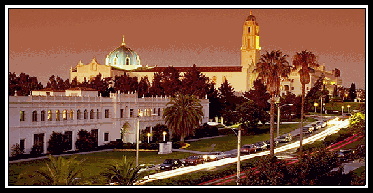B. Why Do Cities Exist?
1. Conditions leading to a
non-urban (rural) situation
a. All factors of
production (land, labor, capital) are homogeneous
- equal productivity
b. Constant returns to
scale
c. Constant transportation
cost (no economies of scale)
d. No advantage (utility)
being near others
=> No advantage from
trade or centralized production => population
uniformly distributed
2. Trading cities
- Comparative advantage
- some factors of production better than
others.
Ex. - Farm land,
minerals, water, labor quality
- Areas have comparative
advantages - lower opportunity costs
.
.
.
.
Consequences:
a. Regions will specialize
and engage in trade if farmers produce an
agricultural surplus
b. Trading cities will
develop if there are economies of scale in
transportation - lower average cost if more
volume shipped
.
.
.
.
.
.
.
.
(1) Trading firms form
to take advantage of economies of scale in
transportation
(2) Locate at
crossroads, ports, river junctions
- Transshipment
point - point where a good is
transferred from one transport mode
to another
(3) Employees locate
near firms, bid up price of land
(4) Residents economize
on land, density increases
(5) Trading city
develops
.
c. Historical notes
(1) Early trading
cities - Athens, Carthage, Timbuktu
(2) Mercantile cities -
more centralized power, long-distance trade
- Key European
cities - Constantinople, Venice,
London, Naples, Milan, Paris, Rome,
Lisbon, Palermo, Seville, Antwerp,
Amsterdam
(3) Largest early
cities in the U.S. were ports - New York,
Philadelphia, Baltimore, Boston
3. Industrial cities
- Early manufacturing
occurred at small scale - artisans and
craftsmen, families, apprentices working in a
small shop, lived above or behind shop
- Scale of manufacturing
increased due to economies of scale in
production - average cost decreases as
volume increases
a. Reasons for economies of
scale:
(1) Factor
specialization
(a) Workers' skills
increase with repetition
(b) Less time
switching from task to task
(2) Indivisible inputs
- inputs that can't be efficiently scaled
down
Ex. -
Equipment, people
b. Market area of a factory
.
.
.
.
.
.
.
.
.
.
.
.
- Market area (and
factory) is larger if scale economies
increase and/or transportation costs
decrease
b. Industrial cities will
develop if:
(1) Agricultural
surplus is large enough to feed factory
workers
(2) Economies of scale
are large relative to transportation costs,
enough to underprice home production
(3) Wage is high enough
to attract workers to work in factories
(4) Workers cluster
around factories, bid up price of land,
density increases, city forms
.
c. Historical notes
(1) Initial cities were
defensive and/or religious in nature
- Economies of scale
in defense and religion
- Labor
specialization also involved
Ex. - California
mission cities
(2) Industrial
Revolution
Key developments:
(a) Innovations in
agriculture - machines, science
- Increased food
production, fewer workers
required - surplus agricultural
workers migrated to urban areas,
increased immigration to U.S.
- Provided labor
for factories
(b) Interchangeable
parts and assembly line - more efficient
than individual production
(c) Inventions and
innovations in specific industries -
textiles (power loom), clothing (sewing
machine), iron and steel (Bessemer
process)
.
.
.
.
.
.
.
.
.
.
.
(d) Intercity
transportation - canals, railroads
- Cost of raw
materials reduced, size of market
increased
.
.
.
.
.
.
.
.
.
.
.
- Larger scale
of production could be
accomodated
(e) Construction
methods - steel frame construction,
elevator
- Allowed
increased height and density
(skyscrapers)
(f) Intraurban
transportation - streetcar
- Allowed cities
to become bigger in area
(3) Industrial cities
became prominent in the U.S. during the
Industrial Revolution - Chicago, Cleveland,
Detroit, Pittsburgh
|


